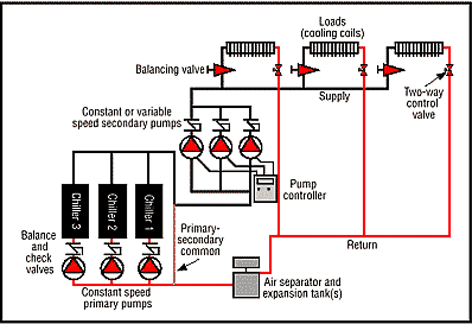Hi all,
I'm trying to work out the flow rate for a pump to heat a chicken house. The farmer has already laid pipe and wants to size a pump. Its a two pipe system, feed and return with 5 water to air heat exchangers Link. He appears to have the first two in parallel, the next two in parallel and the last one on its own. Water flow-through is given as 1.76 m3/h for the exchanges, should i be aiming at a flow of twice this so that the first 4 get the required flow with the last one getting double?
I'm trying to work out the flow rate for a pump to heat a chicken house. The farmer has already laid pipe and wants to size a pump. Its a two pipe system, feed and return with 5 water to air heat exchangers Link. He appears to have the first two in parallel, the next two in parallel and the last one on its own. Water flow-through is given as 1.76 m3/h for the exchanges, should i be aiming at a flow of twice this so that the first 4 get the required flow with the last one getting double?


